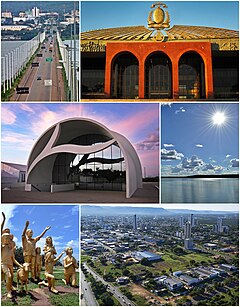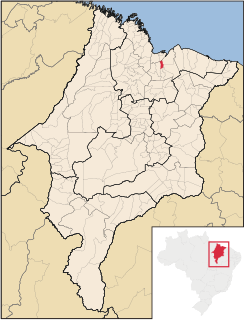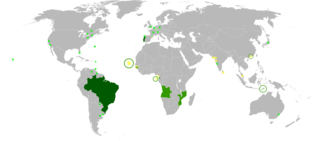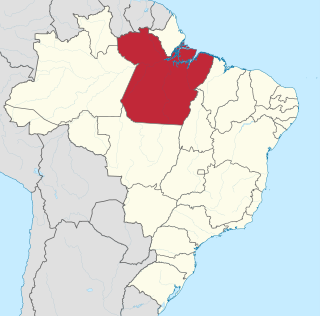Tocantins may refer to he following :

Tocantins is one of the states of Brazil.. It is the newest of the 26 Brazilian states, formed in 1988 and encompassing what had formerly been the northern two-fifths of the state of Goiás. Tocantins covers 277,620.91 square kilometres (107,190.03 sq mi) and has a population of 1,496,880. Construction of its capital, Palmas, began in 1989; most of the other cities in the state date to the Portuguese colonial period. With the exception of Araguaína there are few other cities with a significant population in the state. The government has invested in a new capital, a major hydropower dam, railroads and related infrastructure to develop this primarily agricultural area.

The Araguaia River is one of the major rivers of Brazil, though it is almost equal in volume at its confluence with the Tocantins. It has a total length of approximately 2,627 km. Araguaia means "river of (red) macaws" in the Tupi language.

Palmas is the capital and largest city in the state of Tocantins, Brazil, newly organized under the 1988 constitution. According to IBGE estimates from 2017, the city had 286,787 inhabitants.

The Novo River is a river of Pará state in north-central Brazil.

Axixá is a municipality in the state of Maranhão in the Northeast region of Brazil. The main town lies on the left bank of the Munim River, upstream from Icatu.
Novo Progresso is a municipality in the state of Pará in the Northern region of Brazil.

Serra do Cachimbo is a low mountain range in Brazil, in the southern part of the state of Pará, located mostly in the municipalities of Altamira, Itaituba, Jacareacanga, and Novo Progresso.

Rio Novo National Park is a national park in the state of Pará, Brazil.

Itaituba I National Forest is a national forest in the state of Pará, Brazil.

The Jamanxim National Forest is a national forest created in 2006 in the state of Pará, Brazil. The purpose is to ensure sustainable use of forest resources. The forest contains a sizeable population of settlers without land titles, and informal forest clearing and burning was continuing two years after the national forest had been created. Disputes over the legality of the forest creation were continuing in 2015.

Jalapão is a semi-arid microregion in the state of Tocantins, Brazil. Parts of the microregion have dramatic landscapes with large orange sand dunes, towering rock formations and fast-flowing clear rivers and streams. This is attractive to tourists, and led to Jalapão being chosen for a season of the US version of the Survivor TV series.

The Cachoeira do Cai Dam is a planned hydroelectric dam on the Jamanxim River in the state of Pará, Brazil, with a capacity of 802 megawatts (1,075,000 hp).

The Cachoeira dos Patos Dam is a proposed hydroelectric dam on the Jamanxim River in the state of Pará, Brazil. Work has been delayed due to concern about environmental impact and lack of consultation with affected indigenous people.

The Jardim do Ouro Dam is a proposed hydroelectric dam on the Jamanxim River in the state of Pará, Brazil. The dam would have a 42,600 hectares reservoir and capacity of 227 megawatts (304,000 hp). It has not been studied on detail due to relatively low return on investment compared to other projects in the region.

The Jamanxim Dam is a proposed hydroelectric dam on the Jamanxim River in the state of Pará, Brazil.

The Tapajós hydroelectric complex is a proposed complex of hydroelectric dams on the Tapajós and Jamanxim rivers in the state of Pará, Brazil. The Tapajós dams would contain locks, thus converting the river into a navigable waterway. A "platform" model is proposed under which all people and material would be moved by river or by helicopter, avoiding the need to build access roads and the consequent inflow of settlers and environmental damage. However, there have been protests against flooding of indigenous territory by the dams, and the largest dam seems unlikely to be approved.












